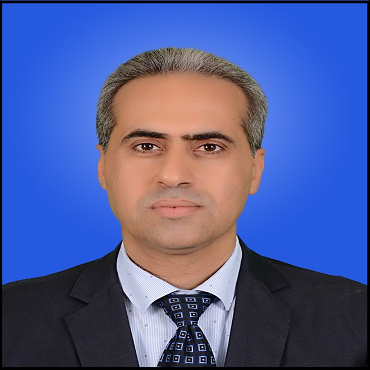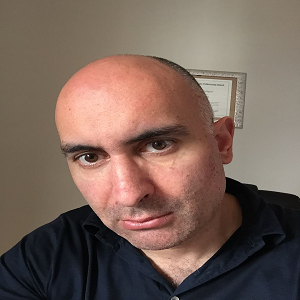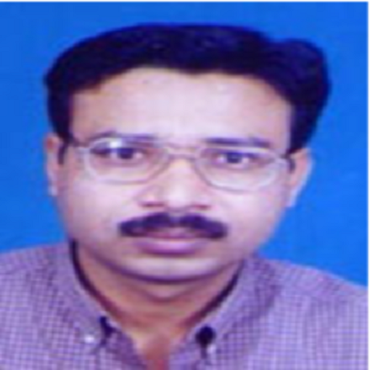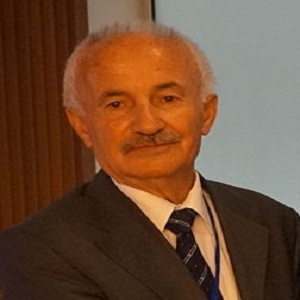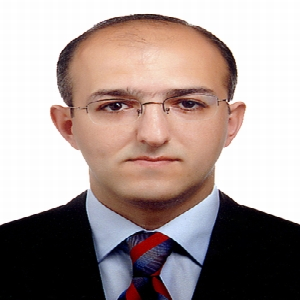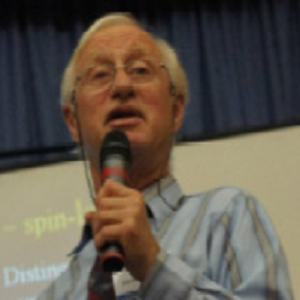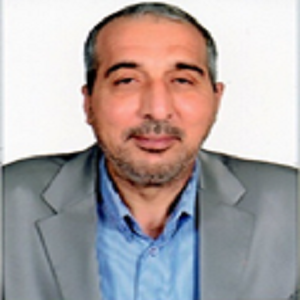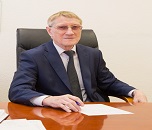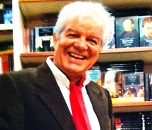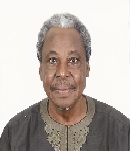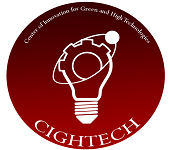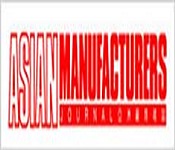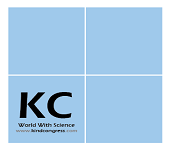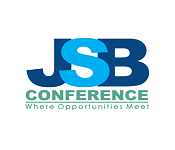
Molecular Physics 2019

Theme: Current research and future visions of Atomic and Molecular Physics
4th International Conference On Atomic and Molecular Physics is scheduled during October 16-17, 2019 in Singapore city, Singapore. Molecular Physics 2019 is a standout amongst the most prepared teaches and might be the most settled through its thought of Astronomy. Material science crosses with various interdisciplinary domains of research, for example, Astrophysics, Biophysics, Computational Physics, Quantum Chemistry and others. New musings in Physics every now and again clear up the fundamental parts of different sciences while opening new roads of research. The gathering course of action intends to scatter the movements of research in Theoretical and Molecular physics to the overall gathering by influencing a phase for dynamic venture, to exchange of aptitude and level instinct from masters, scientists, and educators.
Session 1: Atomic and Molecular Physics
Nuclear and sub-atomic material science is a field had some expertise in material science. Nuclear Physics incorporates the investigation of disengagement and partition of particles and molecules, alongside electron plans and excitation. It manages "Iota" which comprises of both Nucleus and Electrons, though Molecular material science is the investigation of particles that have a few iotas which particularly check for atom's concoction holding, cores and electrons when the atom is in its gas stage.
Molecular Physics Conference | Molecular Physics Meetings | Molecular Physics Congress | Molecular Physics Events | Molecular Physics Conferences | Applied Molecular Physics Conferences | Quantum Physics Conferences | Laser Conferences
Session 2: Ultracold Gases
Ultracold gases are ensembles of atoms held at a temperature near absolute zero. Such systems enable the creation of exotic phenomena such as Bose–Einstein condensation. Ultracold gases are also useful simulating condensed-matter systems because their tunability opens the door to effects that are otherwise difficult to observe.
Molecular Physics Conference | Molecular Physics Meetings | Molecular Physics Congress | Molecular Physics Events | Molecular Physics Conferences | Applied Molecular Physics Conferences | Quantum Physics Conferences | Laser Conferences
Session 3: Acoustics
Acoustics means study of sounds or the branch of physics that deals with sounds because of mechanical waves in glasses, liquids and solids. It also includes concepts such as vibration, ultrasound and infrasound. Audio and noise control industries find the application of acoustics in their respective domains. The word “acoustic” is taken from Greek language whose meaning is “of or for hearing, ready to hear”. Latin word for the word “acoustics” is “Sonic”. The words “Ultrasonic” and “Infrasonic” are used to refer the frequencies above and below the audible range respectively.
Molecular Physics Conference | Molecular Physics Meetings | Molecular Physics Congress | Molecular Physics Events | Molecular Physics Conferences | Applied Molecular Physics Conferences | Quantum Physics Conferences | Laser Conferences
Session 4: Atomic and Molecular Interactions with Photons
Atomic and molecular interactions with photons is the study of the way in which the basic elements of matter interact with packets of electromagnetic energy. This interaction is determined largely by the electronic structure of atoms and molecules; photon absorption or emission is associated with an electron moving from one energy level to another. Molecular physics, while closely related to physics, also overlaps greatly with theoretical chemistry, physical chemistry and chemical physics
Molecular Physics Conference | Molecular Physics Meetings | Molecular Physics Congress | Molecular Physics Events | Molecular Physics Conferences | Applied Molecular Physics Conferences | Quantum Physics Conferences | Laser Conferences
Session 5: Biomedical Physics and Biophysics
It is an interdisciplinary field of science that involves the application of subspecialties of Biology, Chemistry, Physics, Mathematics and Computer Sciences for the growth and development of medical science and healthcare. It is as a rule the utilization of material science ideas, hypotheses and techniques to pharmaceutical or human services. The Biomedical material science program covers distinctive themes like therapeutic imaging, radiation treatment, biophysics of the circulatory framework, vision, and hearing.
Molecular Physics Conference | Molecular Physics Meetings | Molecular Physics Congress | Molecular Physics Events | Molecular Physics Conferences | Applied Molecular Physics Conferences | Quantum Physics Conferences | Laser Conferences
Session 6: High Energy Nuclear Physics
High energy nuclear physics studies about the behaviour of nuclear matter in energy regimes. The most primary focus of this field is the study of heavy ion collisions and as compared to the lower atomic mass of atoms in other particle accelerators. At the very sufficient collision energies there are many of these types of collisions which is mainly theorized to produce the quark-gluon plasma. Traditional nuclear physics has been only devoted to study about the nuclei which are gently carried out. Using the high energy beams of heavy nuclei ions we can create states of nuclear matter that are very far removed from the ground state.
Nuclear Physics Conference | Molecular Physics Meetings | Molecular Physics Congress |Molecular Physics Events | Molecular Physics Conferences | Applied Molecular Physics Conferences | Quantum Physics Conferences | Laser Conferences
Session 7: Graphene and its Applications
Most of the products we enjoy every day are derived from Graphene even though we may not readily appreciate this. Graphene have contribution in the way we work and we use. One particular area in which we will soon begin to see graphene is used on a commercial scale is that in optical electronics, mainly in touchscreens, liquid crystal displays (LCD) and organic light emitting diodes (OLEDs) .Graphene could be used as an ultrafiltration medium to act as a barrier between two substances.
Molecular Physics Conference | Molecular Physics Meetings | Molecular Physics Congress | Molecular Physics Events | Molecular Physics Conferences | Applied Molecular Physics Conferences | Quantum Physics Conferences | Laser Conferences
Session 8: Lasers & Optics
The laser optics session will be an interesting and innovative and will focus on the production, emission, sources and applications of lasers and optics. The applications of laser physics in the different fields such as medicine, weapons, and output powers will be discussed in this session. The advances researches in this technology will be delivered by the most prominent scientist or researcher in this physics meeting.
Molecular Physics Conference | Molecular Physics Meetings | Molecular Physics Congress | Molecular Physics Events | Molecular Physics Conferences | Applied Molecular Physics Conferences | Quantum Physics Conferences | Laser Conferences
Session 9: Ultralong-range Rydberg
Ultralong-range Rydberg molecules possess a novel molecular bond resulting from scattering of the Rydberg electron from the perturber atoms or molecules. The strong interactions between Rydberg atoms in ultracold gases may lead to formation of macroscopic Rydberg macrodimers. The exquisite control over the properties of the Rydberg electron means that interesting and unusual few-body and quantum many-body features can be realized in such systems.
Molecular Physics Conference | Molecular Physics Meetings | Molecular Physics Congress | Molecular Physics Events | Molecular Physics Conferences | Applied Molecular Physics Conferences | Quantum Physics Conferences | Laser Conferences
Session 10: Nano-scale Physics
Nano-scale Physics is the study of a Nano scale system which is a structure with at least one dimension in nanometer scale. It straddles the differences between the molecular and the macroscopic. Nano scale particles are small enough to exhibit important characteristics of molecules but are large enough for their properties to be intended and controlled to meet human needs. The surfaces have a measurement on Nano scale which is called Nano textured surfaces.
Molecular Physics Conference | Molecular Physics Meetings | Molecular Physics Congress | Molecular Physics Events | Molecular Physics Conferences | Applied Molecular Physics Conferences | Quantum Physics Conferences | Laser Conferences
Session 11: Material Physics
Materials physics looks at the physical properties of materials. Materials physics is considered a subset of condensed matter physics and applies fundamental condensed matter concepts to complex multiphase media, including materials of technological interest. Materials physics conference serves as a connection between physics and materials. Materials physics is the use of physics to describe the physical properties of materials. Materials Physics comprises of physical sciences such as chemistry, solid mechanics, solid state physics, and materials science.
Material Physics Conference | Material Physics Meetings | Material Physics Congress |Molecular Physics Events | Molecular Physics Conferences | Applied Molecular Physics Conferences | Quantum Physics Conferences | Laser Conferences
Session 12: Semiconductor Devices
The Semiconductor materials address the research and new development of designs of materials and manufacturing systems that have the potential for strong change in the semiconductor industry. Semiconductor materials are technically minor band gap insulators. The significant property of a semiconductor material is that it can be doped with impurities that modify its electronic properties in a well-regulated way.
Molecular Physics Conference | Molecular Physics Meetings | Molecular Physics Congress | Molecular Physics Events | Molecular Physics Conferences | Applied Molecular Physics Conferences | Quantum Physics Conferences | Laser Conferences
Session 13: Spintronics
Spintronics is the utilization of an essential property of particles known as turn for data preparing. From numerous points of view, spintronics is undifferentiated from gadgets, which rather utilizes the electrical charge on an electron. Conveying data in both the charge and turn of an electron possibly offers gadgets with more noteworthy differences of usefulness.
Molecular Physics Conference | Molecular Physics Meetings | Molecular Physics Congress | Molecular Physics Events | Molecular Physics Conferences | Applied Molecular Physics Conferences | Quantum Physics Conferences | Laser Conferences
Session 14: Quantum Field Theory
Quantum field theory is the classic example of a successful quantum field theory. Quantum mechanics cannot give an account of photons which constitute the prime case of relative 'particles'. At the speed c, a non-relativistic theory such as ordinary QM cannot give even an estimated description as photons have rest mass zero and similarly move in the vacuum. Photons play a vital role in the radiation and absorption processes which has to be executed for instance, when one of an atom's electrons makes a transition between energy levels.
Molecular Physics Conference | Molecular Physics Meetings | Molecular Physics Congress | Molecular Physics Events | Molecular Physics Conferences | Applied Molecular Physics Conferences | Quantum Physics Conferences | Laser Conferences
Session 15: Unconventional Superconductivity
Superconductivity is a key area in physics where the properties, structure and function of the semiconductors will be applied. This physics meeting enables the researchers to present their work or share their theoretical ideas on the applications and fundamentals of superconductivity in physics. The topics that will be focused in this alluring session are superconductors, conventional superconductors, electrical resistance, particle accelerators and spectroscopy.
Molecular Physics Conference | Molecular Physics Meetings | Molecular Physics Congress | Molecular Physics Events | Molecular Physics Conferences | Applied Molecular Physics Conferences | Quantum Physics Conferences | Laser Conferences
Market Analysis
As indicated by the "Quantum Computing Market and Technologies – 2018-2024"report, the worldwide market* will develop at a CAGR of 24.6% all through 2018-2024. Amid 2017 Quantum Computing advances execution has expanded at a great rate; we figure that 2018-2019 will encounter a flood of leaps forward.
We are amidst a "Quantum Computing Supremacy Race", one that will result in pivotal figuring power that outperforms the execution of advanced supercomputers. The quantum figuring advances can possibly change long-held elements in business, knowledge, military undertakings and vital equalization of intensity. In the event that you have been focusing on the news on quantum registering and the advancement of mechanical and national endeavors towards understanding an adaptable, blame tolerant quantum PC that can handle issues, unmanageable to current supercomputing abilities, at that point you realize that something important is mixing all through the quantum world.
Scope and Importance
The worldwide Molecular physics market will proceed with its intense development in the coming years, as per various reports, the innovation propels industry wide. While this development is occurring around the globe, the Asia-Pacific (APAC) locale is relied upon to see the speediest extension.
Parallel to far- reaching mechanical advancement, the photonics showcase is exhibiting strong development in assembling, broadcast communications and buyer hardware particularly in the APAC area.
Why Singapore?
Singapore, an island city-state off southern Malaysia, is a global financial hub focus with a tropical atmosphere and multicultural populace. Its pilgrim center focuses on the Padang, a cricket field since the 1830s and now flanked by terrific structures, for example, City Hall, with its 18 Corinthian sections.
It has every one of the rudiments of a decent host: an extraordinary business condition, world-class offices and framework, proficient administrations, selective occasion scenes and cool attractions, all in a rich and remarkable Asian setting like no place else.
Changi International Airport is only 30 mins from the city. As a smaller city, it is helpful to movement around Singapore. Lodgings, eateries, scenes, shopping and touring spots are advantageously bunched in different neighborhoods, such Marina Bay, Orchard Road, Changi and so on and are effortlessly open by means of Singapore's protected and solid open transportation framework. Other than a lively eating, expressions and diversion scene, Singapore is home to endless key attractions and an extensive variety of housing to suit any financial plan.
Top Universities in Asia
National University of Singapore, Singapore
Nanyang Technological University, Singapore
University of Tokyo, Japan
Tsinghua University, China
Peking University, China
Weizmann Institute of Science, Israel
University of Hong Kong, Hong Kong
King Abdulaziz University, Saudi Arabia
Kyoto University, Japan
Seoul National University, South Korea
Top Universities in Europe
The Abbe School of Photonics (ASP), Germany
HTW University of Applied Sciences, Germany
Technical University of Berlin, Germany
Friedrich Schiller University Jena, Germany
Karlsruhe School of Optics & Photonics (KSOP), Germany
Münster University of Applied Sciences, Germany
Top Universities in the USA
Massachusetts Institute of Technology, USA
University of California--Berkeley, USA
Harvard University, USA
California Institute of Technology, USA
Stanford University, USA
Sullivan Park Science & Technology Center, USA
Corning Technology Center Korea, Korea
Asia Analytical Laboratories (Beijing Analytical Laboratory, Taichung Analytical Laboratory, Corning Technology Center), China
OptoSigma, USA
European Optical Society, Finland
European Photonics Industry Consortium (EPIC), Belgium
Photonics and Hyperfrequency competitiveness cluster, France
Corning Optical Communications Technology Center, Germany
- Atomic and Molecular Physics
- Ultracold Gases
- Acoustics
- Atomic and Molecular Interactions with Photons
- Biomedical Physics and Biophysics
- High Energy Nuclear Physics
- Graphene and its Applications
- Lasers & Optics
- Ultralong-range Rydberg
- Nano-scale Physics
- Material Physics
- Semiconductor Devices
- Spintronics
- Quantum Field Theory
- Unconventional Superconductivity
- Journal of Physics Research and Applications
- Research Journal of Optics and Photonics
10 Organizing Committee Members
3 Renowned Speakers
Alexander P. Yefremov
Institute of Gravitation and Cosmology of Peoples Friendship University of Russia (RUDN University)
Russia
Francis Sgambelluri
Folk University of Biella
Italy
Musa Daji Abdullahi
Kaduna Polytechnic,
Kaduna,
Nigeria


